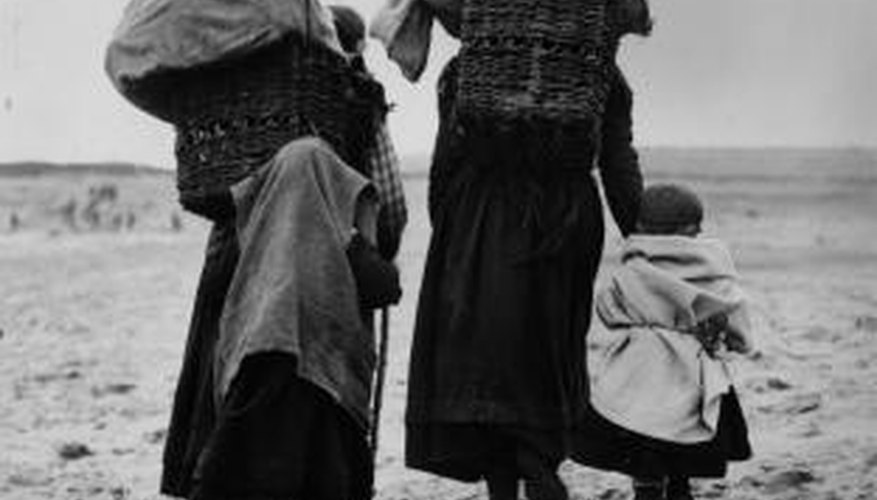The 1930s was a time of hardship and despair in Ireland. The people of Ireland typically held occupations in the agricultural sector, and farm labour was one of the most commonly held jobs. Because the 1930s was a time of poverty for a large number of Irish, clothing was not an important factor. Dress was plain and conventional; women, men and children were normally seen in solid-coloured working-class garments. However, Irish dancing played a large role in the lives of the Irish people, and customary dance costumes were worn.
Men
Traditionally, Irish men dressed conservatively, and the Aran style, named after the Aran Islands off the west coast of Ireland, was favoured by many of them. Customary Aran fashion consisted of loosefitting wool trousers, a cap and a waistcoat. An Aran heavy knitted cream sweater was also popular. An Irish male wardrobe was typically limited to black and cream-coloured clothing.
- Traditionally, Irish men dressed conservatively, and the Aran style, named after the Aran Islands off the west coast of Ireland, was favoured by many of them.
- An Irish male wardrobe was typically limited to black and cream-coloured clothing.
Women
Irish women typically held laborious jobs, and dressed conservatively. Typical fashion included solid-coloured skirts, dresses and shawls. Women also wore Aran fashion: bright solid-coloured skirts, black shawls and cream-coloured, heavy "fisherman" sweaters.
Children
Irish children in the 1930s were expected to behave and dress like their elders. There was no differentiation between the fashion of adults and children. However, children who attended school typically wore uniforms. Otherwise, Irish children held the same jobs as their parents, attended the same dance competitions and dressed in the same fashion.
- Irish children in the 1930s were expected to behave and dress like their elders.
- However, children who attended school typically wore uniforms.
Dance Clothes
Traditional Irish dance clothing allowed people to escape from their daily lives. The male Irish dance costume was filled with colour. The elaborate dance costume primarily included knee breeches, white stockings, waistcoat, knit cap, shirtsleeve and a corset-style belt. The 1930s also introduced the kilt; men would wear a green kilt and a tweed jacket during dance competitions. During Irish dance competitions, women wore gathered dresses in white or green, accompanied by a matching cloak or shawl. Ribbons and other ornate embroidered designs were also attached to the dresses.
- Traditional Irish dance clothing allowed people to escape from their daily lives.
- During Irish dance competitions, women wore gathered dresses in white or green, accompanied by a matching cloak or shawl.
